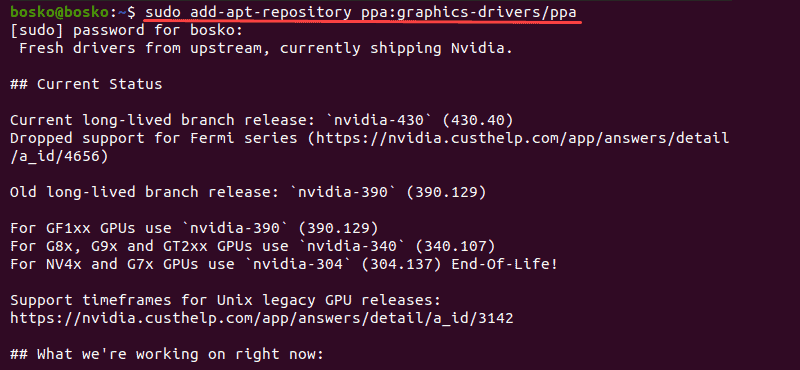
- #How to install latest nvidia drivers ubuntu how to
- #How to install latest nvidia drivers ubuntu install
We recommend the PPA unless that doesn’t work for you for some reason. However, it’s best to stick with packages built specifically for your Linux distribution, if possible. There’s a README for each graphics driver version that provides installation instructions and much more information. This tool is designed to be distribution-agnostic, compiling and installing the latest drivers on any Linux distribution.
#How to install latest nvidia drivers ubuntu install
It’s also possible to download and install graphics drivers directly from NVIDIA using NVIDIA’s own installer. You’d run the following command to install it: sudo apt-get install nvidia-361 Updated NVIDIA graphics drivers will now be available for installation. You can check the PPA’s description page to see what the latest version available is, or type the following command and press the “Tab” key to see a list: sudo apt-get install nvidia-įor example, at the moment version 361 of the NVIDIA graphics drivers is the most recent one available. To add this PPA to your system, open a terminal window and run the following command: sudo add-apt-repository ppa:graphics-drivers/ppaĪfter you have, run the following command to download the latest package lists: sudo apt-get update It also only provides NVIDIA drivers at the moment, so you’ll have to get your drivers elsewhere if you have AMD or Intel graphics hardware.
:max_bytes(150000):strip_icc()/ubuntu-nvidia-5c7857eb46e0fb00011bf29d.jpg)
Gamers will be able to enable this optional repository and get an updated graphics stack without hunting it down, and normal Ubuntu users will be able to ignore it and continue using the stable version included with the current version of Ubuntu. The official Graphics Drivers Team PPA–that’s short for personal package archive–is designed to solve this issue in the long term.

#How to install latest nvidia drivers ubuntu how to
RELATED: How to Install Software From Outside Ubuntu's Software Repositories You’ll see an “Install Updates” button that will take care of this for you in the About This Computer window. You should also install any available updates for Ubuntu from Update Manager before continuing. To check this on Ubuntu’s default Unity desktop, click the gear in the top-right corner of the screen and select “About This Computer.” You’ll see this information displayed to the right of “OS type.” You can also check this from the terminal.

You’ll need to know whether you’re using a 32-bit or 64-bit version of Ubuntu before continuing. RELATED: How to Check if Your Linux System Is 32-bit or 64-bit Are You Using a 32-bit or 64-bit Version of Ubuntu?


 0 kommentar(er)
0 kommentar(er)
